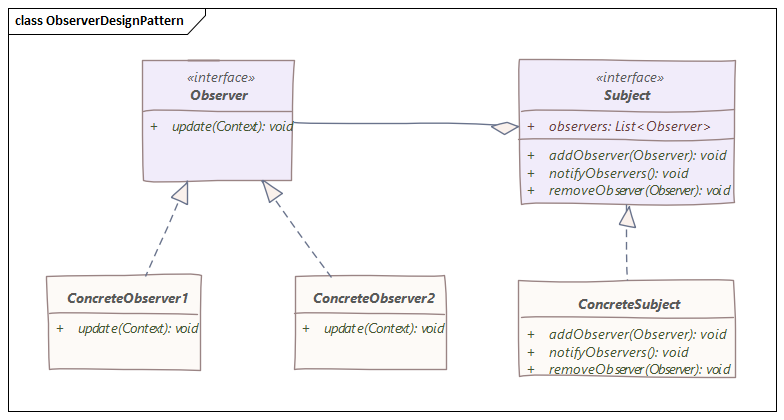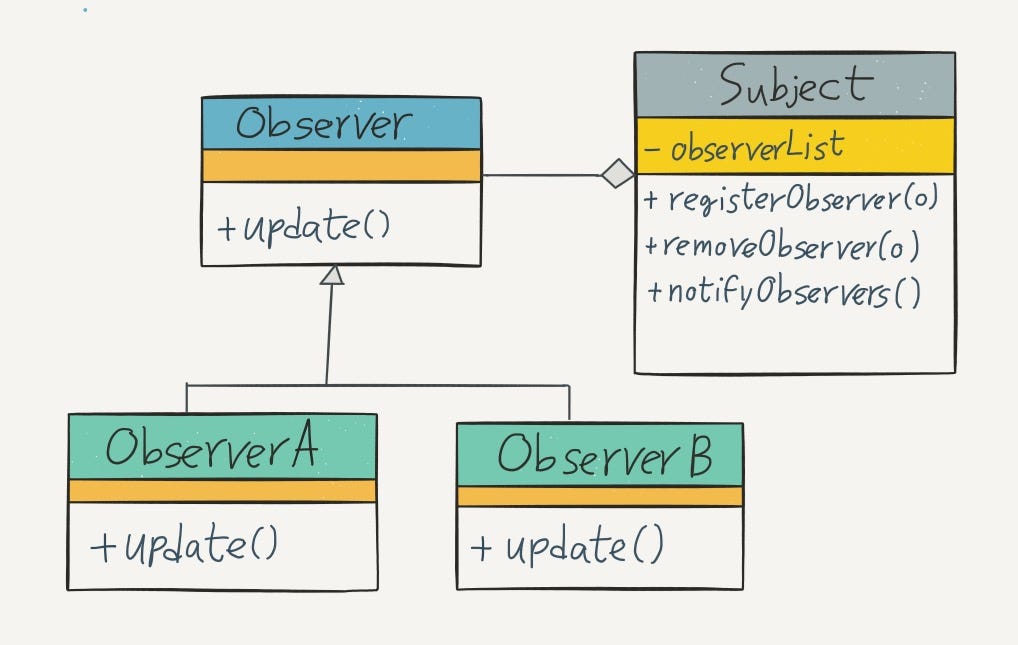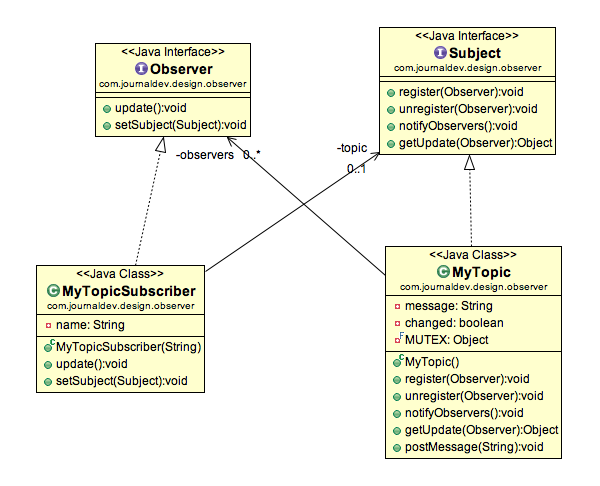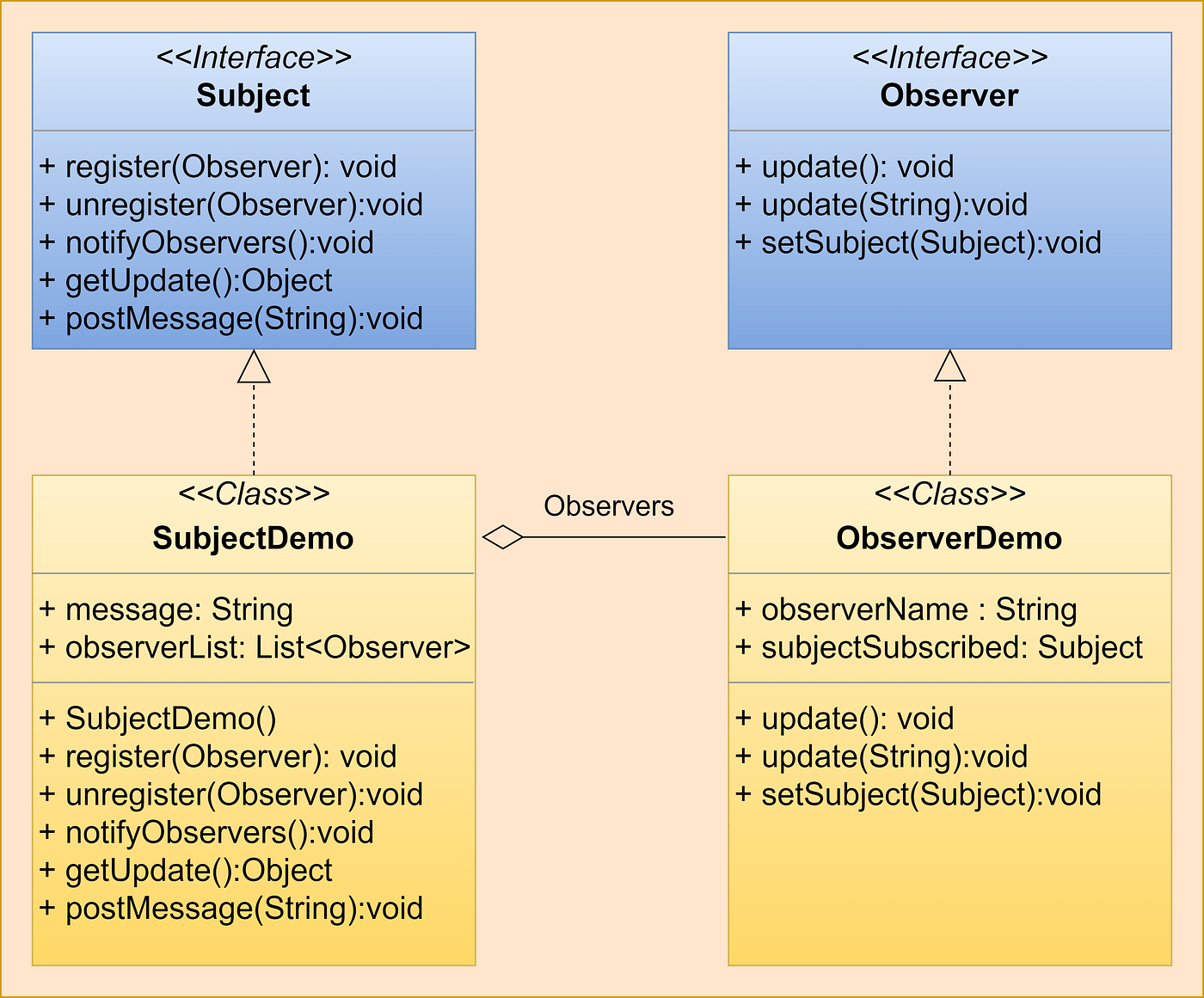Which Java package or framework uses the Observer pattern to monitor events?
Which Java package or framework uses the Observer pattern to monitor events?
The Observer pattern is a fundamental design pattern that enables loose coupling between objects that need to communicate with each other. In the context of Java, several packages and frameworks employ this pattern to manage event-driven programming.
One notable example is the JavaBeans (Javabean) specification from Sun Microsystems. JavaBeans provides a framework for building reusable software components in Java. The Observer pattern plays a crucial role in allowing JavaBeans to communicate with each other by broadcasting events. Beans that register as observers can react to changes or events triggered by another bean.
Another prominent example is the Spring Framework, which uses the Observer pattern through its event-driven programming mechanism. Spring allows applications to publish events and have observers listen for these events, enabling loose coupling between components. This decouples the observer from the observed, making it easier to maintain and extend the application.
The JavaFX (JavaFX 2) framework also employs the Observer pattern in managing UI events. JavaFX uses a mechanism called "event handling" which allows UI controls like buttons and text fields to broadcast events when users interact with them. Observers can then listen for these events and react accordingly, enabling UI components to communicate seamlessly.
Oracle's Java API for XML Processing (JAXP) also employs the Observer pattern in its processing of XML documents. JAXP allows applications to register observers that can watch changes in an XML document. This enables event-driven processing of XML data, making it easier to integrate with other systems and tools.
Lastly, the Java-based web application framework, Vaadin, uses the Observer pattern to manage events triggered by user interactions like button clicks or form submissions. Observers can then react to these events and update the UI accordingly, providing a reactive programming model for web applications.
In conclusion, various Java packages and frameworks leverage the Observer pattern to manage event-driven programming, decouple components, and enable loose coupling between objects that need to communicate with each other. The use of this design pattern fosters modularity, maintainability, and scalability in software development.
java observer pattern

I'd be happy to explain the Observer Pattern in Java!
The Observer Pattern is a design pattern that allows objects to notify other objects about changes to their state. It's commonly used when multiple objects are dependent on each other, and one object needs to notify others about changes it makes.

In Java, the Observer Pattern is implemented using an interface and a concrete class. Here's a basic example:

// The Subject (Observable) interface:public interface Subject {
void addObserver(Observer o);
void removeObserver(Observer o);
void notifyObservers();
}
// The Observer interface:
public interface Observer {
void update(String message);
}
Now, let's create the concrete classes that implement these interfaces:
// A simple WeatherStation class that acts as a Subject:public class WeatherStation implements Subject {
private List observers;
private String temperature;
public WeatherStation() {
observers = new ArrayList<>();
}
@Override
public void addObserver(Observer o) {
observers.add(o);
}
@Override
public void removeObserver(Observer o) {
observers.remove(o);
}
@Override
public void notifyObservers() {
for (Observer observer : observers) {
observer.update("Temperature changed to " + temperature);
}
}
public void setTemperature(String temperature) {
this.temperature = temperature;
notifyObservers();
}
}
// A simple WeatherDisplay class that acts as an Observer:
public class WeatherDisplay implements Observer {
private String currentMessage;
@Override
public void update(String message) {
System.out.println("Received message: " + message);
currentMessage = message;
}
}
Here's how we can use these classes:
// Create a weather station and some display objects:WeatherStation weatherStation = new WeatherStation();
WeatherDisplay display1 = new WeatherDisplay();
WeatherDisplay display2 = new WeatherDisplay();
// Register the displays to receive updates from the weather station:
weatherStation.addObserver(display1);
weatherStation.addObserver(display2);
// Change the temperature, which will notify the displays:
weatherStation.setTemperature("30°C");
// Unregister one of the displays:
weatherStation.removeObserver(display1);
When we run this code, we can see that both displays initially receive the update message when the temperature changes. However, after removing one display from the weather station's observer list, only the other display receives updates.
This is a basic example of how the Observer Pattern works in Java. The key points are:
A Subject (Observable) notifies its Observers about changes to its state. An Observer updates itself when it receives a notification from a Subject. Multiple objects can be connected through this pattern, allowing for decoupling and loose coupling.This design pattern is useful whenever you need to maintain a set of dependencies between objects that are loosely coupled. It's commonly used in systems where real-time updates or notifications are essential!






























